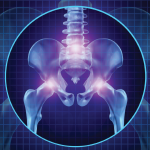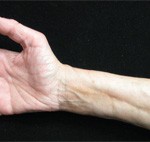 Patients often want to know if the physicality of their job contributed to the development of their lumbosacral radiculopathy syndrome (LRS). The question is particularly relevant for individuals who want to minimize risk and prevent future symptoms. Researcher may have a partial answer.
Patients often want to know if the physicality of their job contributed to the development of their lumbosacral radiculopathy syndrome (LRS). The question is particularly relevant for individuals who want to minimize risk and prevent future symptoms. Researcher may have a partial answer.
A recent systematic review sought to identify the work-related risk factors associated with LRS, finding moderate- to high-quality evidence that the level of exposure to bending of the trunk or lifting and carrying may be used to classify LRS as a work-related disease. However, P. Paul F.M. Kuijer, PhD, assistant professor of occupational health at the Academic Medical Center, Amsterdam, and colleagues found in their review that—in contrast to bending and lifting—professional driving and sitting were not significantly associated with LRS. The meta-analyses included dose-response analyses, all the results of which were published online in Neurology.1
The researchers identified 24 studies that fulfilled their inclusion criteria. The studies were performed worldwide in 12 countries, including China, Finland and the U.S. Thirteen of the studies contained exposure categories with occupational activities, as opposed to exposure categories based on job titles, and they included these studies in the meta-analyses. The included studies had a median of 209 patients with LRS, and the total number of participants considered was 10,142. The meta-analysis found significant associations with heavy, physically demanding work (odds ratio [OR] 2.03, 95% confidence interval [CI] 1.48–2.79), bending or twisting of the trunk (OR 2.43, 95% CI 1.67–3.55), and lifting and carrying in combination with bending or twisting of the trunk (OR 2.84, 95% CI 0.90–2.35). The rating of the evidence for work-related risk factors varied from very low for physical workload to high for the combination of lifting and bending of the trunk.
Researchers also used one cohort study and two case-controlled studies to calculate a dose-response relationship for five years of exposure for bending and the combination of bending with lifting. Specifically, the researchers were able to calculate a dose-response relationship for bending of the trunk for 20º or more for at least one hour per workday, for lifting at least 5 kg for two hours per workday and for lifting 20 kg at least 10 times per workday. The combined exposure to this bending and lifting translated into a mean 14% increase in LRS per five years of exposure. In other words, patients who bend and lift experienced an OR of 1.3 (95% CI 1.02–1.66) after 10 years of exposure and an OR of 2.19 (95% CI 1.06–4.61) after 30 years of exposure.


